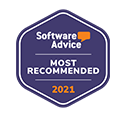The CoVID-19 pandemic has impacted almost every human on our planet in some form or the other.
With lockdowns imposed all around the globe and social distancing norms in place, people began working from home and remote work became the norm.
Now, with the influx of vaccines, some employees have started returning to offices while some continue to work from home.
However, work environments have seemingly become more complex, where engagements are a mix of face to face and remote.
In this article, we will explore this topic further and piece together some tips for businesses and employees to adapt to the hybrid culture without hampering their productivity.
But first, let us define a hybrid work environment.
What is a hybrid work environment?
Basically, a work environment that harnesses the best of employee productivity levels by allowing them to work between remote and physical office spaces is referred to as a hybrid work model.
The good news? It offers endless benefits.
From the well being of your employees to better work-life balance and inclusiveness, a hybrid work environment is a perfect solution.
However, you need appropriate technology updates and cloud solutions to implement a successful hybrid model.
So, before we delve deeper, here are the top four hybrid models you need to be aware of:
Types of hybrid work models
You can implement any of the following models based on requirements such as the number of employees, size of the organisation and domain of your business.
-
Weekly model
As the name suggests, employees switch between the physical office and work from home every week.
-
Shift model
Here, employees alternate between remote and on-site shifts. Say, one half of the day in the office and the other at home. It is a complex model to implement but works for some industries.
-
Split week model
Employees work in a physical office for a few days and work remotely for the rest of the days. This can be implemented at an individual level as well as department wise.
-
Full flexibility model
In this model, each employee chooses between the two options for each day of the week. For a face to face meeting, the employee operates from the office and works remotely for everything else.
With an approval mechanism in place, the choice rests with an employee or a department.
Each of the models listed above has its advantages. Some of them include:
- Higher productivity levels from existing employees and better collaboration opportunities
- Broader opportunities for learning and attracting talent
- Lower costs of operation through efficient use of workspaces
- Higher employee satisfaction and mental health with best of facilities at home and office
- Better organisation culture
However, to derive the benefits mentioned above, you must work upon the following areas while defining a hybrid work culture for your company.
- Training to ensure effectiveness and productivity
- Equipment for efficient working
- Collaboration when remote working
- Access to resources when working from home
- Opportunities for growth and access to mentorship
Having understood the key benefits and the changes you must opt for, here are some tips to boost productivity in a hybrid work environment.
Steps to boost productivity
-
Keep the guiding lights of values and culture on
An organisation’s culture is built on its core values and is often unique. Therefore, keeping these values in view is crucial while rolling out the hybrid work culture.
The culture glues an organisation together through the transition. An organisation that places adequate emphasis on both encourages optimal performance and promotes optimism within employees.
-
Refine leadership
The transition to a hybrid will be led by the top leaders who will articulate the direction and will approve the framework. However, it is the mid-level managers who will drive the transition through engagements with the employees.
Therefore, it becomes crucial to support them through relevant training sessions. After all, managers are expected to not only keep the employees engaged but also guide them through the process implementation of the hybrid model.
-
Keep sustained communication
Communication, even over communication, is crucial in any transition. Employees must be clear on the new regime’s objectives, directions, priorities, roles, and deliverables.
Communication can help you gain alignment, address questions and concerns, and highlight achievements along the way.
Any inadequacy in crisp communication is a trap. And many companies tend to walk into one, thereby leaving employees and other stakeholders like customers and partners confused.
Another potential trap is perceived exclusion by the remote workforce. It is important to maintain a line of sight and visibility during the normal course of working.
-
Build on trust
It is easier to foster trust when everyone’s working in close proximity. The equation can change when remote working comes into play. And this can spell doom.
Hence, it is essential to redefine the definition of trust for the hybrid work environment. While the key elements of trust can vary depending upon the industry, ways to retain and build upon trust levels need to be articulated well.
Setting clear expectations, having processes around keeping everyone informed transparently, and clear accountabilities are good elements to build upon.
-
Focus on mental health
All transitions entail an impact on mental health, whether positive or negative. And most employees have seen one in the recent past—from working full time in offices to working full time remotely.
Now we are talking about rolling out another one—the hybrid.
The majority of employees are looking forward to returning to the office for social reasons as well.
Herein lies the crucial element—learn what employees feel and incorporate the findings into the plans for a hybrid. Restructuring current ways of engagement while keeping mental health in focus inculcates a sense of belonging in the hybrid work environment.
-
Increase focus on feedback
There is a lot you can learn from remote working models of different companies. Employees have learnt to adapt and know which tools and resources work best for them. This treasure of knowledge should be leaned upon while building the hybrid model that works for you.
At the same time, regular feedback to employees on their contribution needs to remain in focus. A two-way feedback mechanism will drive superior engagement and will indeed work wonders during and beyond the transition.
-
Upgrade technology
Organisations have already invested in technology to support full remote working. However, that investment is unlikely to be sufficient in the hybrid model. IT will remain the backbone, and it is crucial to make the requisite upgrades.
Final words
Here’s an old saying—there’s always a brighter side to everything.
While the recent pandemic has affected almost everything around us, we have also learnt that there is a better way to work. A hybrid work environment is undoubtedly the way forward.
It will require a transition, judicious planning, and focused implementation. Early adopters have moved forward, and templates including key steps are available. Go for it and drive the change.

Yukti is a content marketing enthusiast with a soft spot for Saas. She loves weaving complicated concepts into simple stories. When not at work, she is found reading books or watching movies.














